Often, the ventilation system works ineffectively and part of the air enters from the ventilation duct back into the apartment. The effect of reverse draft of ventilation is especially noticeable in kitchens or in bathrooms of apartments. Check valves will help fight unpleasant odors.
The principle of operation of the ventilation check valve
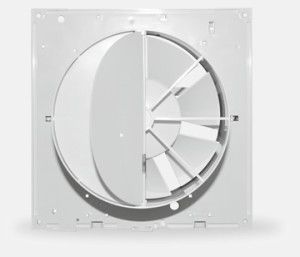
Non-return valves in ventilation are called a group of protective devices to prevent the rotation of the air flow in exhaust ventilation systems or simply reverse ventilation in apartments. The valve allows air to flow in the desired direction, inhibiting reverse movement. Check valves for exhaust ventilation work automatically and this is the main plus of their use. In ventilation systems of residential and public buildings, check valves are used to prevent air from entering the common ventilation duct into separate rooms.
Exhaust check valves operate in natural and mechanical draft systems. The valve prevents insects and dust from entering the household ventilation.
Drafts may occur if the system is not fitted with a non-return valve.
Types of ventilation check valves
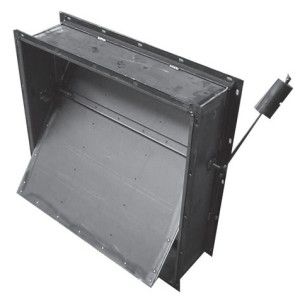
The main structural part of any check valve for natural ventilation is the shutter. It is he who does not allow air to pass in an undesirable direction.
There are two types of round and rectangular check valves for ventilation:
- with a slide valve;
- with a shutter in the form of a disc or flaps.
The first ones are used to work with liquid media. The latter are designed specifically for ventilation. They come with a horizontal or vertical axis of rotation, as well as single-leaf and double-leaf.
There are rectangular and round check valves for ventilation with different cross-sectional diameters.
The main parameter when choosing a check valve is its capacity.
Natural ventilation check valves are easy to manufacture and very reliable.
They are made of plastic or metal, the material is selected depending on the features of the system. In vertical pipelines, the air flow moves vertically, so the valve is mounted horizontally to ensure correct operation of the valve.
The most commonly used round and rectangular check ventilation valves with a capacity of 4 to 6 m / s. They work quietly and efficiently. They are installed both independently and complete with an exhaust device.
All rectangular or round check valves for ventilation are also divided into:
- Heated. Such check valves for ventilation with an electric drive have the advantage: condensation does not collect in the system, and the structure will not be covered with ice in severe frosts;
- Without heating. Good for indoor use only.
The presence of an electric drive at the check valve for ventilation requires the participation of an electrician in its connection.
Although the device is cheap, the ventilation check valve can be assembled with your own hands, but more on that later.
Check valve design for ventilation
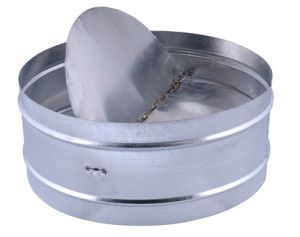
The check valve design is very simple: the flapper disc is attached to an axle, allowing it to swing freely. A plumb line is attached to cover the valve when the fan stops.Ventilation valves can be rectangular, round or square.
Industrial models differ from check valves for domestic ventilation in diameter and material, they are classified in the explosion-proof category, although the device is the same.
The diameter of a round or rectangular check valve for industrial ventilation can be from 125 to 1000 mm, they are installed in explosion-hazardous industries.
The double blade butterfly valve is widely used.
Butterfly devices are made more often of metal, the axis for attaching the blades is installed in the middle of the section. As soon as the fan stops, the blades cover the section and the reverse draft of ventilation in the apartment stops. The diameters of the butterfly valves range from 100 to 315 mm.
The improved version of the "butterfly" is equipped with seals that reduce the noise during the operation of the blades.
It is very often used for ventilation in the kitchen a check valve in the form of shutters or petals (inertial grille). There are several blades in the structure, they are located on the horizontal axes.
How to choose a check valve
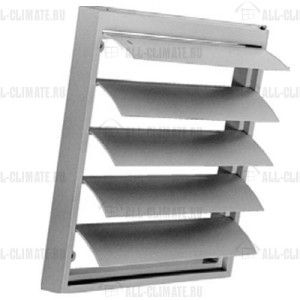
When purchasing a check valve for kitchen ventilation or in a bathroom, you need to take into account the speed of air movement, because the shutter must respond to even the slightest flow. Poor traction in the system is the main problem when organizing a natural ventilation system. Therefore, most owners combine a valve with an exhaust fan. To cover the structure from the side of the room, a beautiful ventilation grill is installed.
But for the natural ventilation system to work flawlessly, it is important to choose the right check valve. Otherwise, reverse draft in the ventilation of an apartment building will continue to poison the existence of residents.
Pay attention to:
- sectional shape;
- section diameter;
- valve material;
- valve device;
- valve purpose;
- the manufacturer (it affects more the price than the quality of the simplest mechanism).
You can purchase a ready-made kit of a fan and a check valve. Here it is necessary to pay attention to the fan power. For the kitchen, it will be suitable with a coefficient of 10, and for the bathroom and toilet, 7 will be enough.
When purchasing a check valve for household ventilation of a private house, it is important to take into account the climatic conditions. For example, a “butterfly” will be covered with ice more quickly than a uniaxial structure. In private houses, in contrast to apartment buildings, the tenants are annoyed not by the reverse draft in the apartment, but by blowing wind into the ventilation and the penetration of rodents into it.
Diy check valve for ventilation
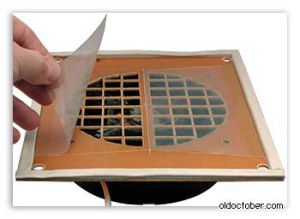
Next, we will describe how to make a check valve with your own hands. It will not only effectively help to avoid backdraft in the ventilation of an apartment building, but also save you money.
Do-it-yourself installation of a ventilation check valve is especially relevant for residents of the last floors of houses, where the problem of tightening "foreign" odors through the air ducts of the general exchange system is common.
We offer an improved version of the motorized ventilation check valve with a fan.
For the base of the check valve for kitchen ventilation, thick plastic or textolite is suitable. You will need a plate overlapping the outlet of the exhaust duct and no more than 4 mm thick. Markings are made on the plate: a grille the size of a fan hole, as well as holes for fastening to the wall (in the corners) and for attaching the fan.
The larger the mesh of the lattice, the denser the material for the sashes should be!
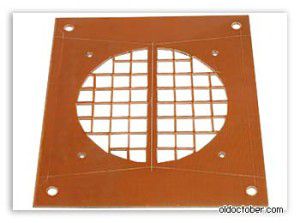
To prevent air from "walking" between the base and the fan, a rubber gasket is used.
To prevent not only back draft in the ventilation of the apartment of an apartment building, but also the penetration of insects, a small plastic mesh or even nylon from tights is attached to the base grill. The latter is easily replaceable. And so that the residents are not disturbed by the vibration from the fan motor, rubber shock absorbers are used during installation.
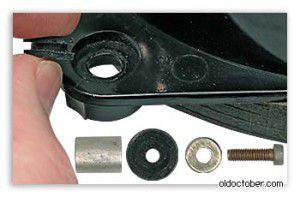
Sashes are used from thick polyethylene (not less than 0.1mm). The film should be perfectly smooth, the smallest waviness will break the tightness of the ventilation, and the reverse draft in the apartment of an apartment building will resume. The sash can be mounted on tape with a fabric base. Detailed instructions for the manufacture of flaps for a plastic ventilation check valve in the video:
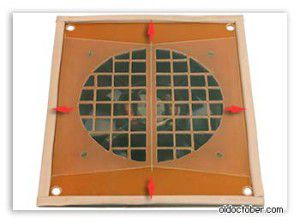
We recommend cutting the flaps in place, from an already glued piece of film. Moreover, if it is slightly wrinkled during operation, it must be changed. Two flaps are cut together only at the very end of the process. You need to cut with a sharp construction blade.
Use self-adhesive foam tape to prevent a gap between the homemade plastic ventilation check valve and the wall.
During operation, it is necessary to periodically clean or change the plastic mesh clogged with dust.
If made correctly, such a homemade plastic check valve for ventilation will last for more than one year. And the tenants of the apartment will get rid of the back draft typical for the ventilation of apartment buildings for a long time.








